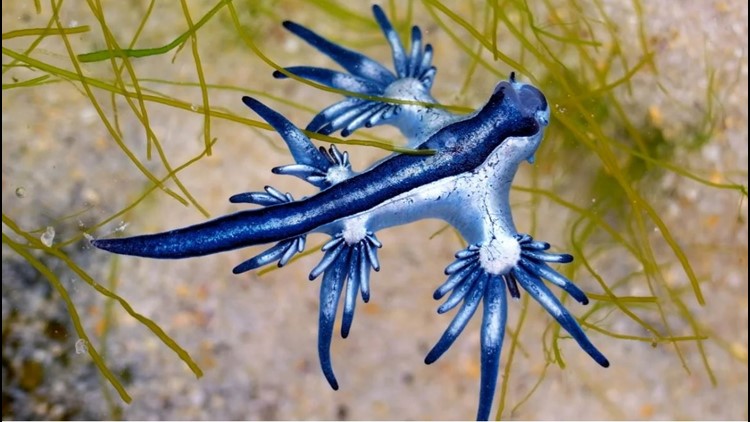CORPUS CHRISTI, Texas — It's the time of year when Texans head to the coast for a little sun, sand and surf. Most would just as soon skip seeing any sea creatures -- unless they're fried with a side of cole slaw.
One of the creepy critters that might be floating beside you or washing ashore this time of year is the blue sea dragon.
Their bright blue coloring makes them strangely beautiful but experts warn you should look, but don't touch!
A tourist from San Antonio spotted a few of them on the shore of Mustang Island near Corpus Christi last spring. Eric Yanta told CNN he scooped one up to film it, not realizing it was venomous. He put it back in the water and it didn't sting him.
Fast facts about blue dragons
- While "dragon" might conjure up images of the fire-breathing beasts in "Game of Thrones," these sea slugs are tiny, about the size of a grape.
- Don't let their size fool you though. They are fierce little suckers and their sting can pack a punch. That's because their favorite meal is the Portuguese man-o’-war. The blue dragons ingest, store and concentrate their prey's stinging cells so their own sting is more powerful.
- Symptoms following a sting can include nausea and vomiting, according to American Oceans. If you are stung by a blue dragon, it is best to go to a hospital for treatment, according to Ocean Info.
- The venom remains active even after a blue dragon dies.
They're also masters of disguise and downright sneaky. The vibrant blue coloring is on their bellies and they float on their backs so they blend with the water. Their backs are gray to help camouflage them on the sea surface.
Blue dragons are simultaneous hermaphrodites, meaning they each have both male and female reproductive organs, according to American Oceans.
After a pair mates, they will lay a string of about 16 eggs in the water which take about three days to hatch into larvae.
Blue dragons are also known as blue angels or sea swallows but the scientific name is blue glaucus.
A group of them floating together is called a blue fleet.



